Doypack packaging machines have revolutionized the packaging industry, offering a practical and visually appealing solution for a diverse range of products. Stand-up pouches, also known as Doypacks, is one kind of premade pouches, provide a unique combination of convenience, functionality, and aesthetic appeal that has made them popular among businesses and consumers alike. But how do these machines create these versatile pouches? In this blog post, we will take a closer look at the inner workings of Doypack packaging machines and explore the process by which they create stand-up pouches.
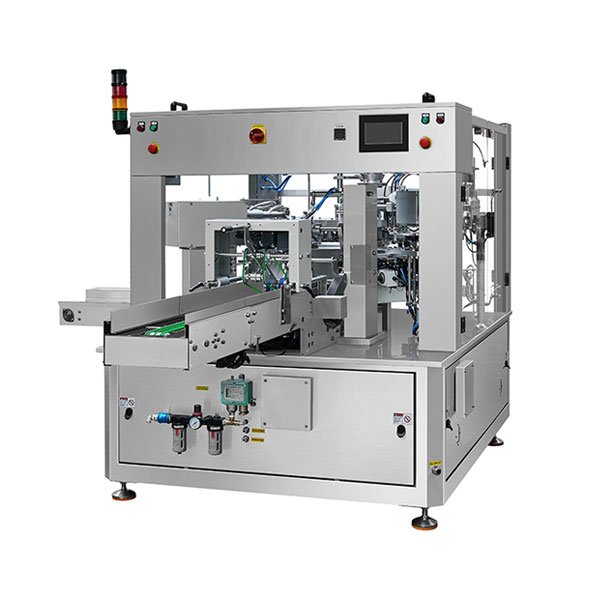
What are the Doypack Packaging Process?
Premade pouch packing machines are widely used in pack snacks, cereals, coffee beans, dry fruits, seafood, pet food, powder products, liquid products or other non food products. The process of handling zip lock stand-up pouches using a premade pouch packaging machine can be divided into several key stages:
1. Pouch Loading
The machine’s pouch feeding system, typically a conveyor or carousel, loads empty, pre-made pouches into the machine. These pouches can be made from various materials and may feature specialized closures such as zippers or spouts. Sensors detect the presence of pouches, ensuring they are correctly positioned for the filling and sealing process.
2. Pouch Opening
Before the pouches can be filled with product, they must be opened. This is achieved using a combination of vacuum suction cups, mechanical grippers, or air blowing devices, depending on the machine’s design. The opening mechanism ensures the pouches are opened wide enough for the filling process to take place without damaging the pouch material.
3. Filling
Once the pouches are opened, the machine’s filling system dispenses the product into each pouch. Various filling systems can be used, depending on the type of product being packaged, such as volumetric, weight-based, or liquid filling systems. The machine’s control system ensures the precise amount of product is dispensed into each pouch, maintaining consistent fill levels and reducing waste.
4. Sealing
After the pouches have been filled with the product, they are sealed to maintain freshness and prevent leakage. Depending on the pouch material and closure type, sealing may be achieved using heat sealing, ultrasonic sealing, or a combination of both. The sealing process typically involves two stages: first, the machine removes any excess air from the pouch and then applies the necessary heat or pressure to create a secure seal.
5. Output
Once the pouches are sealed, they are discharged from the machine, either onto a conveyor belt or directly into a carton or other packaging. The machine’s sensors ensure that only properly filled and sealed pouches are discharged, with any defective pouches being rejected and removed from the production line.
What Are the Key Components and Mechanisms of Doypack Packaging Machines?
Doypack packaging machines consist of several critical components and mechanisms that work together to create the stand-up pouches:
Pouch Feeding System: This component loads the pre-made pouches into the machine, ensuring they are correctly positioned for the filling and sealing process. Various types of pouch feeding systems are available, such as belt conveyors and rotary carousels.
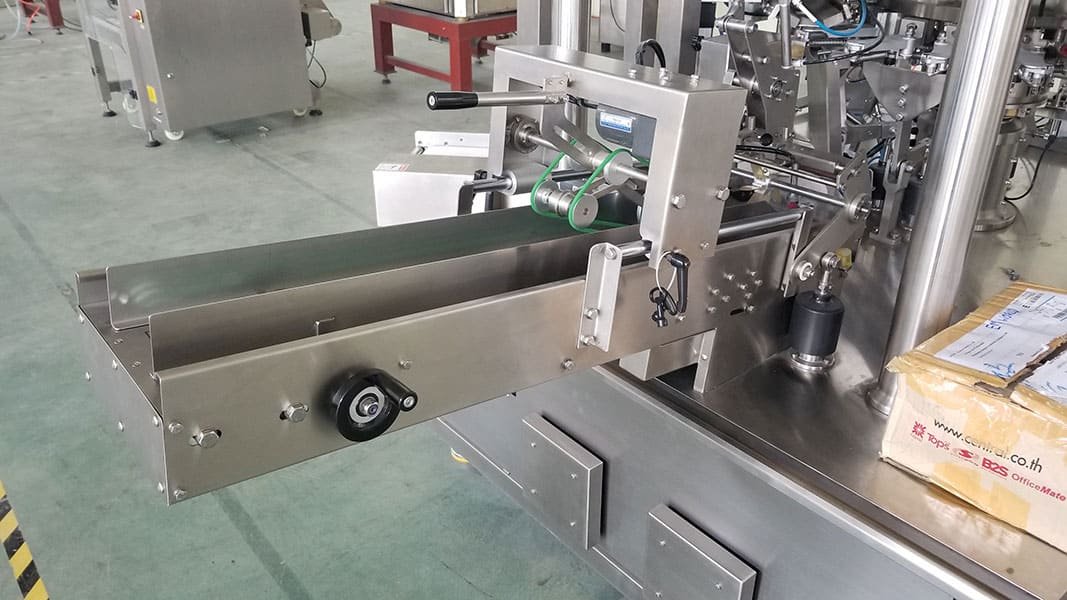
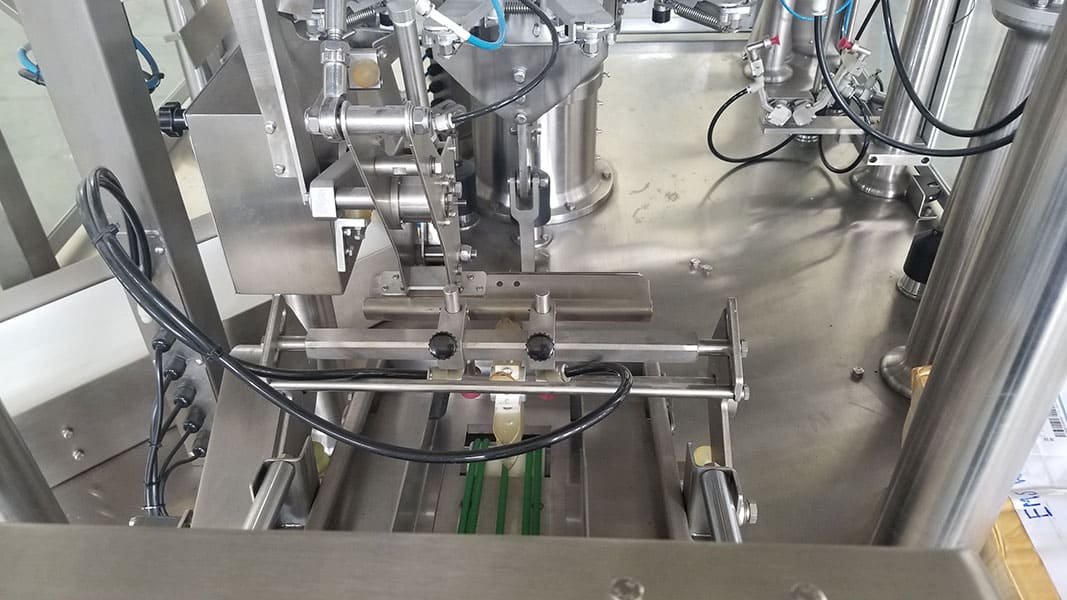
Opening Mechanism: The opening mechanism is responsible for opening the pouches before filling. Common opening mechanisms include vacuum suction cups, mechanical grippers, and air blowing devices.
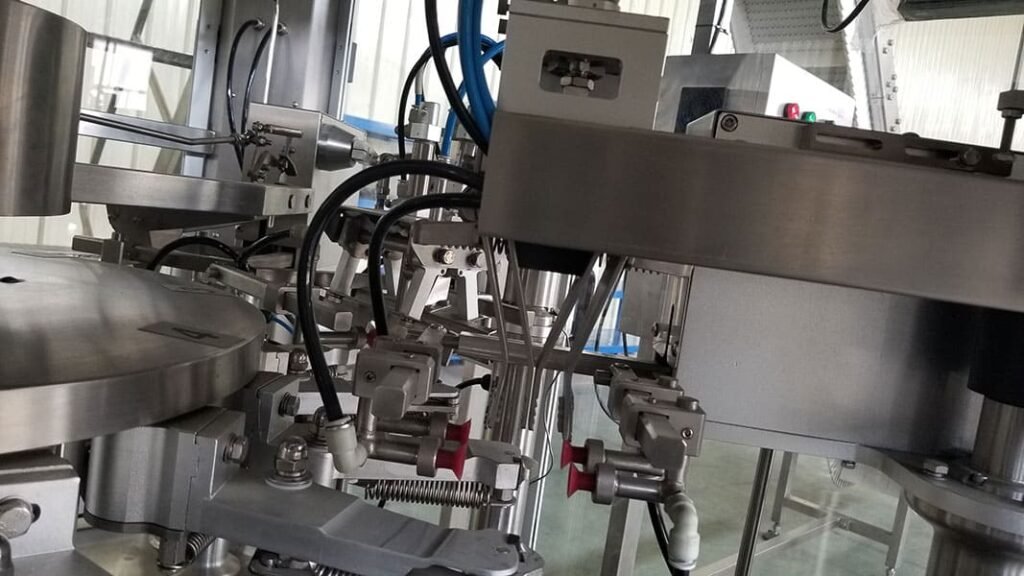
Filling System: The filling system dispenses the product into the opened pouches, ensuring precise and consistent filling. Different filling systems can be used depending on the product type, such as volumetric, weight-based, or liquid filling systems.
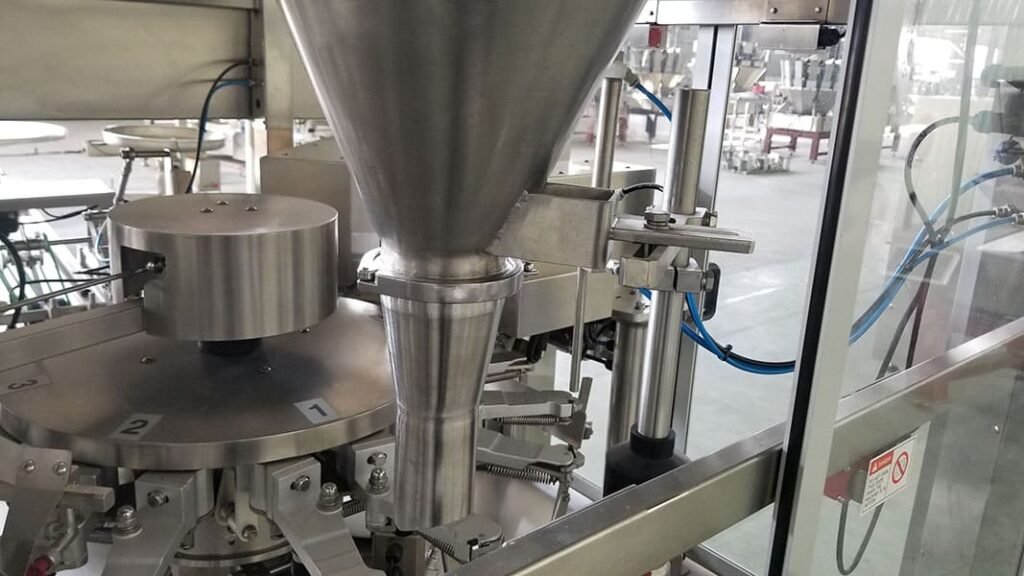
Sealing Mechanism: The sealing mechanism ensures a secure and reliable seal on the filled pouches, preserving product freshness and preventing leakage. Depending on the pouch material and closure type, sealing may be achieved using heat sealing, ultrasonic sealing, or a combination of both.
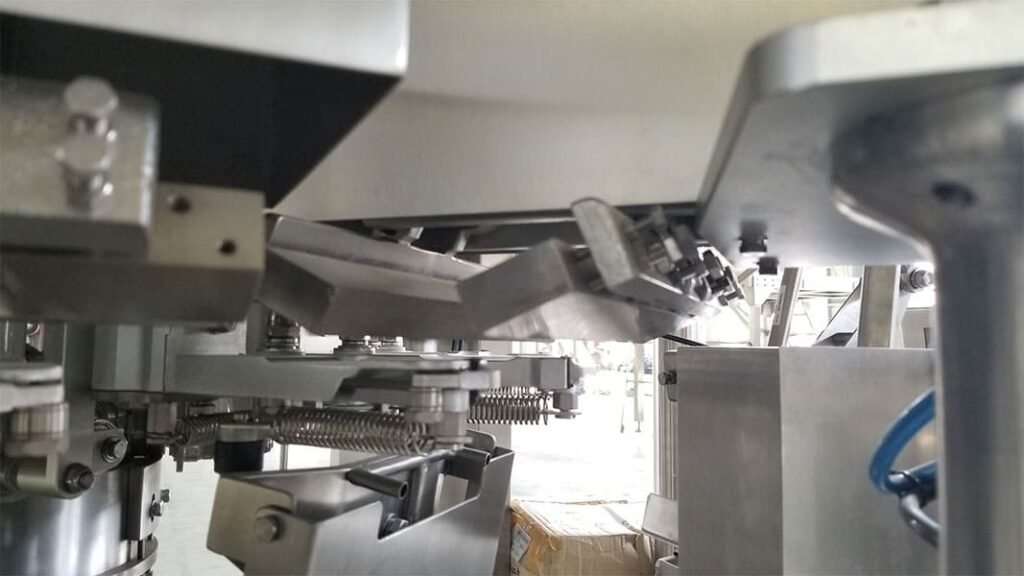
Control System: The control system is the heart of the Doypack packaging machine, monitoring and coordinating the entire process. It typically consists of a touchscreen control panel and a Programmable Logic Controller (PLC) that manages machine settings, monitors performance, and facilitates troubleshooting.
Sensors: Various sensors are integrated throughout the machine to ensure proper functioning and prevent errors. These sensors detect pouch presence and position, monitor filling and sealing processes, and reject any defective pouches from the production line.
Output System: The discharge system removes the filled and sealed pouches from the machine, either onto a conveyor belt or directly into secondary packaging. This component ensures that only properly filled and sealed pouches are released, maintaining product quality and reducing waste.

Conclusion
Doypack packaging machines provide an efficient and effective solution for creating stand-up pouches that meet the growing demand for convenient, visually appealing, and sustainable packaging. By understanding the intricacies of the Doypack packaging process and the key components that make these machines function, businesses can optimize their packaging operations and make informed decisions when selecting the right machine for their needs.
With a better understanding of how Doypack packaging machines work, businesses can ensure a seamless and efficient packaging process that caters to the ever-changing market trends and consumer preferences. Investing in a Doypack packaging machine not only boosts productivity and reduces waste but also elevates your brand image and enhances customer satisfaction.
